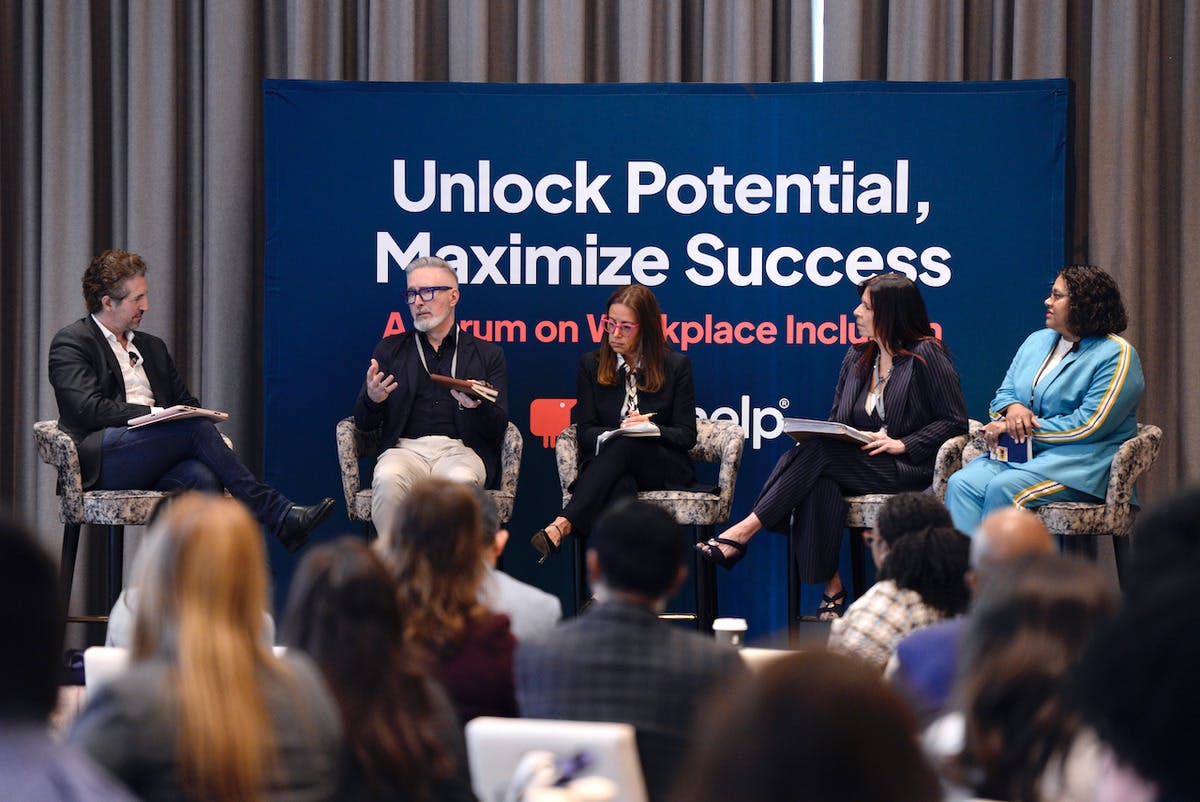Our second annual workplace inclusion forum included industry leaders from Columbia, SAP, Spotify, EY, the Federal Reserve Bank of NYC, Unilever, Be My Eyes and more. They explored how neurodiversity in the workplace can help organizations unlock potential and maximize success.
Here are some of the key takeaways from their discussions.
The evolving neurodiverse workforce
- 15-20% of people are neurodivergent, but 76% don’t disclose at work due to stigma or lack of diagnosis.
- 53% of Gen Z identify as neurodivergent, yet many onboard without needing a formal diagnosis.
- Gen Z and millennials make up 38% of the workforce; that’s expected to hit 58% by 2030.

GUIDE
Unlocking neurodiversity in the workplace
Read our free guide including practical strategies to build a more neuroinclusive, supportive environment for all employees.
Specialized neurodiversity programs
To support the growing number of neurodivergent individuals in the workforce, organizations are launching dedicated initiatives. Examples include EY’s Neurodiverse Center of Excellence and SAP’s Global Autism at Work Program. Both are designed to create supportive environments from day one.
Sarah Loucks, SAP's Autism at Work Global Lead, explained that their program was inspired by research showing how children with autism thrive when given the right support and technology. She emphasized that this is more than Corporate Social Responsibility (CSR). It is a strategic necessity for long-term success.
Tools to support neurodiversity in the workplace
Hiren Shukla highlighted EY’s collaboration with Everway, which provides tools like Read&Write to their workforce. These tools help employees work to their unique strengths. The panel agreed that these tools benefit all employees, not just those who are neurodivergent.
Standardizing support from the start reduces the need for disclosure and ensures everyone can thrive. Teresa Torres from the Federal Reserve Bank of New York shared that company-wide adoption demonstrates a commitment to neurodiversity inclusion.
Assistive technology can simplify cognitive tasks, reduce mental load, and boost productivity.
Neurodiversity inclusion for innovation
Embracing neurodiversity is a strategic advantage for forward-thinking organizations. It enhances cognitive diversity and builds a culture of belonging. Teams made up of different neurotypes bring unique strengths and perspectives. This is how companies can gain a competitive edge in today’s dynamic workplace.
SAP’s Supriya Jha emphasized shifting “from stigma to pride” and reframing neurodiversity as a source of creativity and innovation. EY and SAP’s programs show how supporting neurodivergent talent drives business success:
- SAP’s Autism at Work program integrates neurodivergent talent while meeting business needs and creating positive societal impact
- EY’s neurodiversity models have generated over $1 billion in global value
- Programs foster a culture of belonging and empowerment
- Teams with higher belonging perform better and unlock their full potential
Neuroinclusive hiring and talent management
Candidates can be unfairly judged on things like spelling errors on resumes or communication style in interviews. Providing interview preparation resources helps level the playing field and guides candidates on what to expect. This empowers them to showcase their abilities effectively.
Prioritize skills over superficial attributes
Elizabeth Nieto, Spotify's former Global Head of Equity and Impact, shared that irrelevant social assessments such as eye contact during interviews, should be removed. Instead, focus on specific skill sets. She also noted that recognizing diverse strengths, as seen in companies like Amazon and Spotify, leads to a more neuroinclusive workplace.
Empower employee storytelling
SAP’s Autism Inclusion Pledge includes encouraging neurodivergent employees to share their experiences. This raises awareness and creates a culture of belonging. Employee stories help others understand neurodivergent perspectives and create support across the company.

Managers play a key role
Use situational leadership to adapt their approach to team needs. This includes:
- Recognizing different communication styles
- Offering flexibility in work arrangements
- Using specialist training to guide decisions
Why are Employee Resource Groups important? (ERGs)
Employee Resource Groups (ERGs) play a key role in building a supportive and neuroinclusive workplace. ERGs can align with business goals, increase visibility, and encourage engagement by connecting members with leadership and recognizing their contributions.
ERG leaders should be seen as business leaders. Integrating ERG responsibilities into career progression and providing resources empowers them to drive meaningful initiatives. Through this, organizations can create stronger teams, promote a culture of belonging, and ensure that neurodivergent employees have the support they need to thrive.

